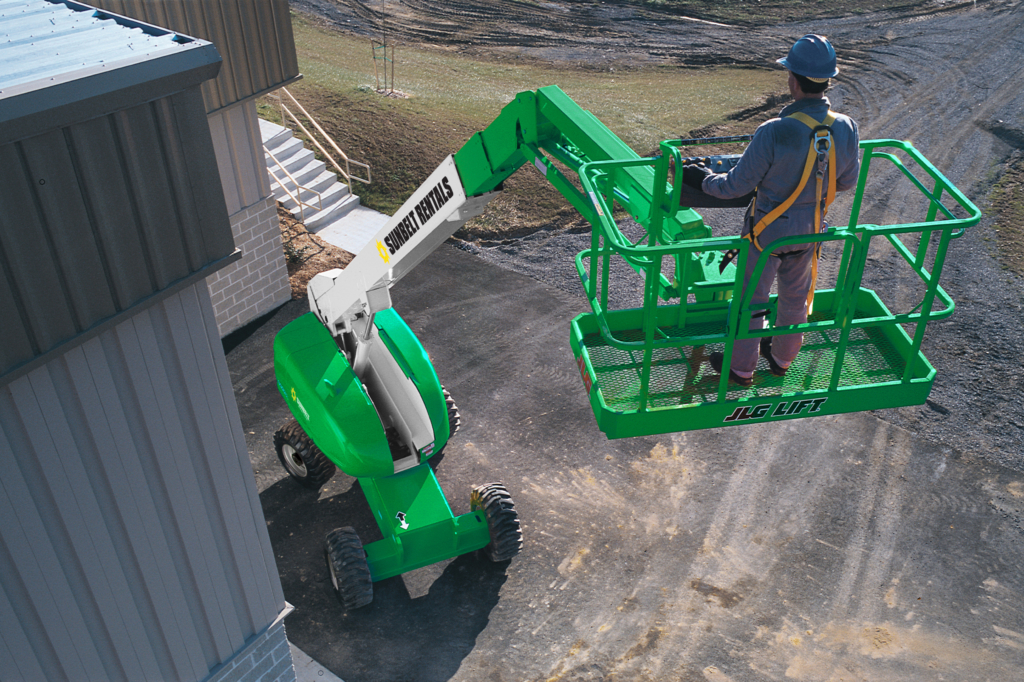Q: What are the keys to a successful Job Safety Assessment related to lift use?
 Q: What are the keys to a successful Job Safety Assessment related to lift use?
Q: What are the keys to a successful Job Safety Assessment related to lift use?
A: A Job Safety Assessment (JSA) should be as concise as possible, and not generic. While the basic framework can be generic, JSAs should be adapted and expanded to address specific issues with each individual job. You don’t have to recreate the wheel every time you do the same type of job; you just have to fine-tune it a bit.
When it comes to determining what questions to include on the checklist, ask your workers; they’ll know. And because an untrained worker is a hazard, one of the first that should be on every JSA is: “Are the workers involved trained to the task and trained in lockout/tagout (LOTO), hazcom, confined space, and anything else pertaining to this specific job?”
Other questions that should be included are:
■ What are all the hazards present and possible?
■ Do you have the right lift for the job? Will it reach the work areas?
■ What Personal Protective Equipment (PPE) do we need, or is required, such as safety glasses, steel-toed work boots, hard hat, harness and lanyard (short, adjustable or self-retracting)?
■ Are the users trained on the following equipment, and has it been inspected: fall protection, harness and lanyard?
■ Have you assessed positions of power lines? Have you achieved proper clearance (10′ clear of 50,000-volt lines or less, 20′ clearance of 50,000+ volt lines)? If you don’t know the voltage, consult the power company; don’t guess. Remember that ALL overhead lines are considered power lines.
■ Have barricades been created to protect the lift from pedestrians and other vehicles?
■ What is your rescue plan and who are your rescue staff? Can workers on the ground get you down from the ground controls? Note: 911 is not a rescue plan.
■ Is there access to the job area, proper ground support, and a path to the work site?
■ Can the ground support the lift? Note: Septic tanks will not support any weight, and sidewalks may not support much weight either.
■ Is this a confined space? Are workers trained in confined space? Is carbon monoxide buildup from the lift’s engine in an enclosed space a problem?
■ Is the jobsite clean and neat?
■ Have you conducted a review of the last job’s notes?
■ Are chemicals being used? If so, is OSHA’s Hazard Communication Standard being followed and PPE being used per the products’ Safety Data Sheets?
■ Have you checked the weather for potential lightning or wind? Note: The maximum allowable wind speed on a lift rated for outdoor use is 28 mph.
■ What materials will be on the platform, and what’s the load capacity of the lift?
■ Is there equipment that can move and may hit the lift that needs to be locked out?
One key thing to remember about a JSA is that it should be reviewed throughout a job, not just at the beginning. This is a real challenge with the safe use of equipment. Many workers fill in the JSA and file it, then go to work. That JSA is a live, ever-changing document and the workers should be constantly on the lookout for all of the hazards listed on it—and it should be adjusted accordingly. For example, if you’ve put down cones for pedestrian traffic and the pedestrians are still walking near or under your work, you must adjust your plan and improve your barricading, such as putting a spotter down on the ground to keep pedestrians out of your work area. If someone walks through your cones and gets hurt, it’s your responsibility. Sorry, but that is the real world we live in.
Also, ground conditions change as you travel the jobsite, and rain, weather and wind all affect the safe use of construction equipment. Be aware and keep up with the changing conditions on the JSA. Consider doing a JSA for sections of the work, and reassess when you move onto another part of the job or work.
Keep adjusting, keep reviewing, and keep the workers involved in the process along the way. Their involvement is also key to making these checklists work and to preventing an incident or accident. For more on the subject of Job Safety Assessments, download OSHA’s comprehensive booklet at: osha.gov/Publications/osha3071.pdf
______________________________________________________________________________________
 Jeff Stachowiak is the director of safety training for Sunbelt Rentals. He is also a member of the ANSI A92 committee for Aerial Work Platforms, ISO/TC 214 committee for MEWPs, ISO/ TC 110 committee for Rough Terrain Forklifts, and the UL Fabricated Scaffold Planks and Stages committee. He specializes in aerial lift, forklift and scaffold safety, as well as OSHA and MSHA regulations and OSHA citations. SunbeltRentals.com
Jeff Stachowiak is the director of safety training for Sunbelt Rentals. He is also a member of the ANSI A92 committee for Aerial Work Platforms, ISO/TC 214 committee for MEWPs, ISO/ TC 110 committee for Rough Terrain Forklifts, and the UL Fabricated Scaffold Planks and Stages committee. He specializes in aerial lift, forklift and scaffold safety, as well as OSHA and MSHA regulations and OSHA citations. SunbeltRentals.com




